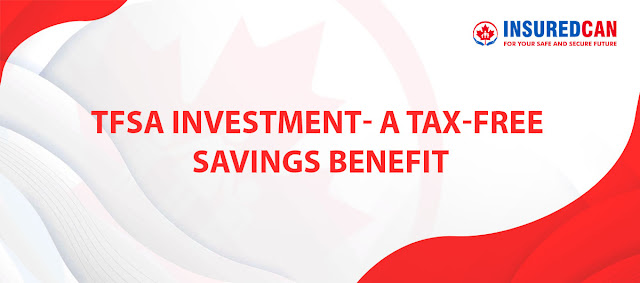TFSA Investment- A Tax-Free Savings Benefit
In Canada, people prefer to have a tax-free money-saving solution. According to the Canada Revenue Agency report, nearly 15.3 million Canadians invested in TFSA in 2019. Moreover, there are around 22.3 million TFSAs, which means each Canadian has around 1.5 TFSAs. Since this is one of the most popular investment options, people like to invest in a Tax-free investment account. However, according to TFAS advisors in Toronto, this plan offers more than only tax-free savings.
The TFSA holds complex investment products such as exchange-traded funds, mutual funds, and equities. The products help to maximize your investment, and all earnings will be tax-free. So, if you want tax-free savings but are still determining whether the product is the right fit, here's what a TFSA investment advisor in Canada says.
What is TFSA?
The Canadian government introduced this personal saving system TFSA (Tax-Free Saving Account), in the 2008 budget. This savings account is to help people save money for different purposes. You can begin contributing to a TFSA as of January 2, 2009, and the accumulations are tax-free. A TFSA can comprise a mix of asset classes, including funds, equities, treasuries, GICs, and mutual funds.
Any Canadian citizen who reaches 18 on any date throughout a calendar year is eligible to make deposits in TFSA. The "contribution room" of the TFSA holder starts to grow at that point. This refers to the discrepancy between the exact worth contributed and the total maximum deposit permitted.
If you fall short of your annual contribution cap, the shortfall is carried over to the subsequent year. This further added to your earned income. INSUREDCAN, a TFSA investment advisor in Canada, explains how TFSA works if you still have doubts.
How Much Investment Should I Make in TFSA?
As per the TFSA advisor in Toronto, for 2023, the annual maximum TFSA investment for each person is set at $6,500. The yearly maximum donation limit originally was as follows:
1. $5,000 from 2009 to 2012
2. $5,500 in 2013
3. $10,000 in 2015
4. $5,500 in 2016
5. $6,000 from 2019 to 2022
The subsequent year's TFSA contribution ceiling will be increased by any carried-over unused investment space from the previous year. Therefore, a calendar year's worth of withdrawals will result in more contribution space the following year.
What are The Benefits of TFSA?
With a TFSA, you may save money in qualified assets and see it grow tax-free lifetime. In a TFSA, dividends, earnings, and investment income are tax-free for life. In addition, you can take any number of tax-free withdrawals from your TFSA investments anytime for any reason.
Additionally, you can add the money you withdraw back into your TFSA. You must do it next year to avoid it affecting your contribution room. Some other significant benefits of TFSA by TFSA investment advisors in Toronto are as follows:
Withdrawals are Not Mandatory
These tools are excellent for massive products but also a terrific method to make long-term investments. For example, if you started a TFSA after getting a new car or house, you could seek a long-term investment vehicle. Let investment grow if you don't have any major expenses planned shortly.
Withdrawal Doesn’t Affect Benefits
The performance of a TFSA will not generally impact your eligibility for income-tested government benefits, which is also important from a tax viewpoint. Although it may not be a selling factor for many investors, this might save the lives of limited income seniors who get benefits with strict claw-back clauses.
Effective Tax Strategy for Real Estate Planning
Although no one loves to talk about it, it might be crucial if you want to safeguard the financial prospects of your family members. Upon the demise of the account owner, distributions from a TFSA may be paid to a beneficiary—whether a family member or friend—without triggering any tax consequences.
Your Spouse/Law Partner Can Contribute
Contributions to TFSAs are made with post-tax money. The TFSA of a spouse or common-law partner may receive contributions, according to the TFSA investment advisor in Toronto. To increase your payments, you may make a TFSA contribution to the spouse's or common-law partner's account.
Will the TFSA Account Closed If I Leave the Country?
After creating the TFSA, you can still leave the TFSA account open and pay no taxes on any earnings or withdrawals in Canada. You may not be able to make contributions to your TFSA. However, you are still allowed to make contributions during the year that you changed residences. You should have been aware of a 1 % penalty fee. You have to pay this penalty every month that a prohibited non-resident contribution stays in the TFSA.
Bottom Line
So, this is all about TFSA and how it benefits you to grow your money without paying taxes. The best thing is that TFSA assets can be used as security and loans. However, the TFSA is not for non-residents of Canada. If you leave the country and are no longer a Canadian, you'll be able to manage TFSA but not be able to contribute further to the TFSA account.
For more updates or information about TFSA, contact us. INSUREDCAN is a TFSA investment agent advisor in Toronto who guides you to get the right saving options.




Comments
Post a Comment